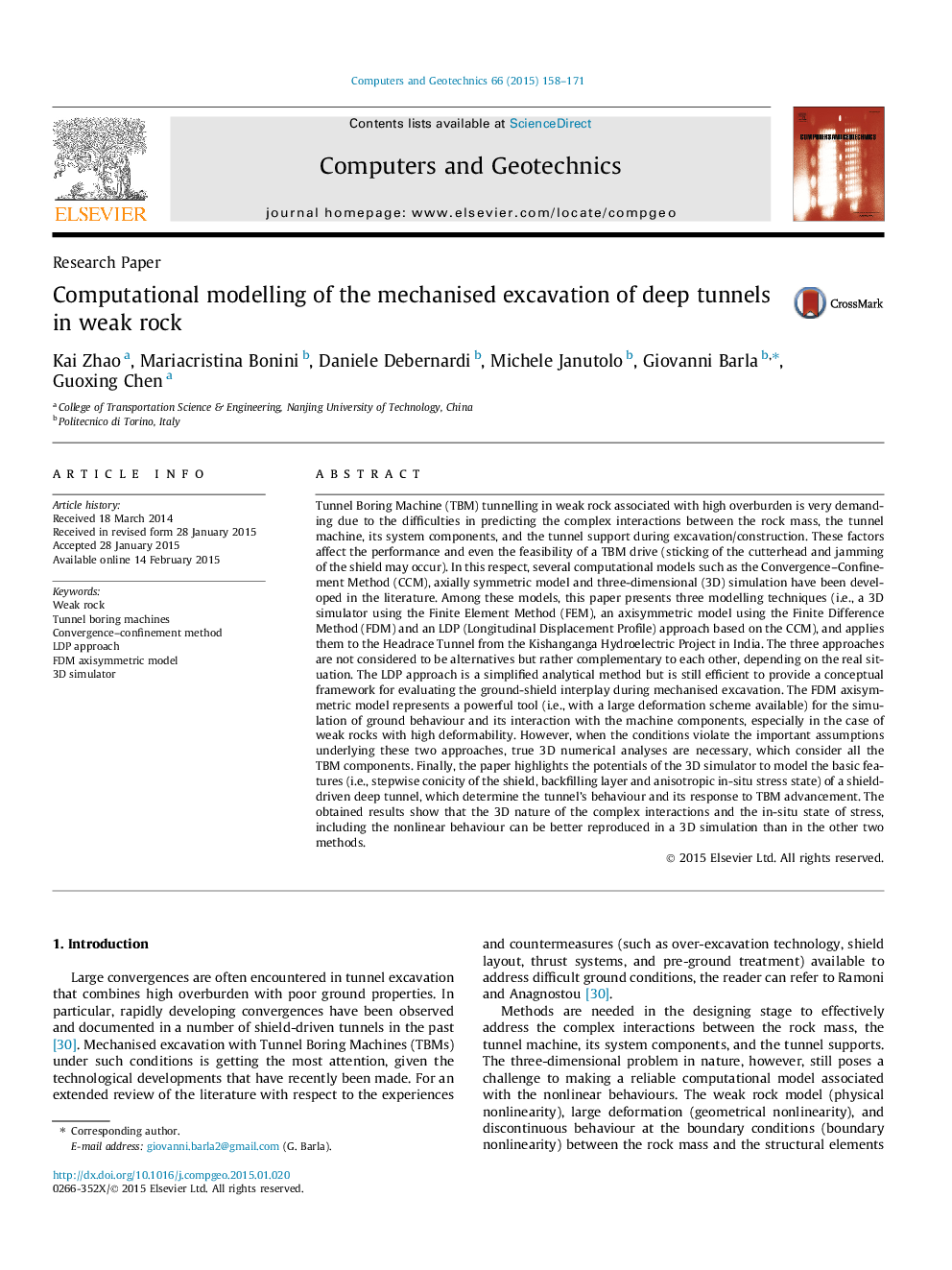| کد مقاله | کد نشریه | سال انتشار | مقاله انگلیسی | نسخه تمام متن |
|---|---|---|---|---|
| 254738 | 503326 | 2015 | 14 صفحه PDF | دانلود رایگان |
Tunnel Boring Machine (TBM) tunnelling in weak rock associated with high overburden is very demanding due to the difficulties in predicting the complex interactions between the rock mass, the tunnel machine, its system components, and the tunnel support during excavation/construction. These factors affect the performance and even the feasibility of a TBM drive (sticking of the cutterhead and jamming of the shield may occur). In this respect, several computational models such as the Convergence–Confinement Method (CCM), axially symmetric model and three-dimensional (3D) simulation have been developed in the literature. Among these models, this paper presents three modelling techniques (i.e., a 3D simulator using the Finite Element Method (FEM), an axisymmetric model using the Finite Difference Method (FDM) and an LDP (Longitudinal Displacement Profile) approach based on the CCM), and applies them to the Headrace Tunnel from the Kishanganga Hydroelectric Project in India. The three approaches are not considered to be alternatives but rather complementary to each other, depending on the real situation. The LDP approach is a simplified analytical method but is still efficient to provide a conceptual framework for evaluating the ground-shield interplay during mechanised excavation. The FDM axisymmetric model represents a powerful tool (i.e., with a large deformation scheme available) for the simulation of ground behaviour and its interaction with the machine components, especially in the case of weak rocks with high deformability. However, when the conditions violate the important assumptions underlying these two approaches, true 3D numerical analyses are necessary, which consider all the TBM components. Finally, the paper highlights the potentials of the 3D simulator to model the basic features (i.e., stepwise conicity of the shield, backfilling layer and anisotropic in-situ stress state) of a shield-driven deep tunnel, which determine the tunnel’s behaviour and its response to TBM advancement. The obtained results show that the 3D nature of the complex interactions and the in-situ state of stress, including the nonlinear behaviour can be better reproduced in a 3D simulation than in the other two methods.
Journal: Computers and Geotechnics - Volume 66, May 2015, Pages 158–171
